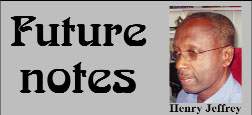After the First World War, armed with a ‘progressive’ fourteen-point plan that called for, among other things, the formation of a ‘general association of nations’, United States President Woodrow Wilson landed in Europe and was able to convince the relevant world that such a body (the forerunner of the United Nations) would be a useful international tool. Unfortunately, on his return home he was unable to persuade his own congress, which refused ratification and officially kept the US out of the League of Nations.

Furthermore, the political nature and structure of these negotiations are bound to lead to compromises that appear to some to detract from the very foundation of what is intended. What negotiators try to achieve is the most positive outcome between what is ideally required and national and international political realities. It is doubtful that there has ever been an important international agreement that has met all the expectations of its various stakeholders.
Therefore, what the above suggests is that in negotiating and packaging important and large international agreements,

